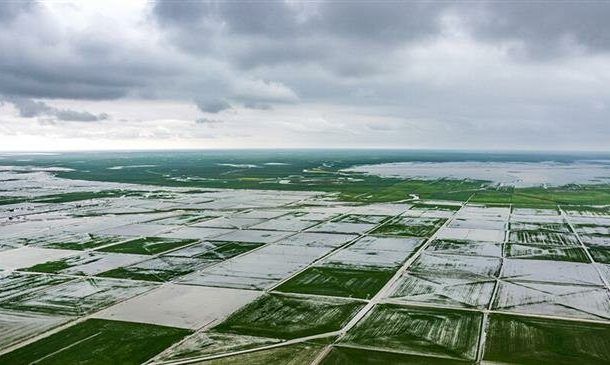Heavy downpours and flash floods continue to batter several provinces across Iran but the extreme weather conditions are forecasted to briefly subside later on Wednesday, before another major system brings further precipitation to the country in the next few days.
The heavy rains have triggered raging torrents of water in 25 of the country’s 31 provinces since March 19. The resulting situation has most adversely affected the northern provinces of Golestan and Mazandaran, as well as the provinces of Lorestan in the west, Kohgiluyeh and Boyer-Ahmad in the southwest, and the southern province of Fars.
As of Wednesday, IRNA reported that flooding had affected as many as 17 cities and more than 600 villages in the two northern provinces alone.
The deluge has inflicted heavy losses on a number of agricultural and farming industries, as well as tribal stockraising units. It has inundated many businesses and warehouses, and damaged or destroyed a large number of residential units in disaster areas.
Floodwaters have completely cut off 11 villages in Golestan’s Aq Qala City, one of the worst areas affected by flooding, Tasnim News Agency reported, saying the Islamic Revolution Guards Corps has undertaken operations there to channel out the water.
On Wednesday afternoon, President Hassan Rouhani arrived in Golestan Province to personally oversee the disaster relief operations in the two affected northern province.
In North Khorasan Province, precipitation and subsequent deluges have caused damage to 9,600 hectares of farms and orchards, IRNA reported.
As many as 25 people have been killed as a result of the flooding countrywide. The southern city of Shiraz with 19 deaths that occurred during Monday's floods accounts for the highest number of casualties.
Meteorologists are predicting that the downpours will briefly recede in most parts of the country later on Wednesday.
Downpours and flooding, however, will still be affecting the country’s eastern provinces where extreme weather conditions continue.
Heavy rainfall and thunderstorms have been predicted for the Persian Gulf islands to the south of the country, where stormy conditions are expected to create large waves.
A fresh weather system entering the country from the west will bring further precipitation as of Thursday.
‘Victims to receive ex gratia loans’
Earlier on Wednesday, President Rouhani told a meeting of cabinet ministers that authorities need to invest all in their power in repairing the damage. “All our efforts at this juncture should be directed at restoring the situation to normal in the afflicted provinces,” he said.

He also said the government had issued the necessary instructions for the formation of a committee tasked with pinpointing the root causes of the deadly flooding.
Meanwhile, Iran’s Central Bank Governor Abdolnasser Hemmati said that in addition to the government assistance, the country’s banking system would be providing loans to those involved in agriculture, agribusiness, animal husbandry, and weaving industries in Golestan and Mazandaran.
Qolam-Reza Soleimani, the chief of the Iran's Central Insurance agency also said that his organization is examining ways to reduce the financial burden faced by those whose uninsured vehicles have been damaged during the flooding.
* To join the national rescue effort for flood victims, you can check the Iranian Red Crescent Society's donation page here.Source: presstv.com


Comments